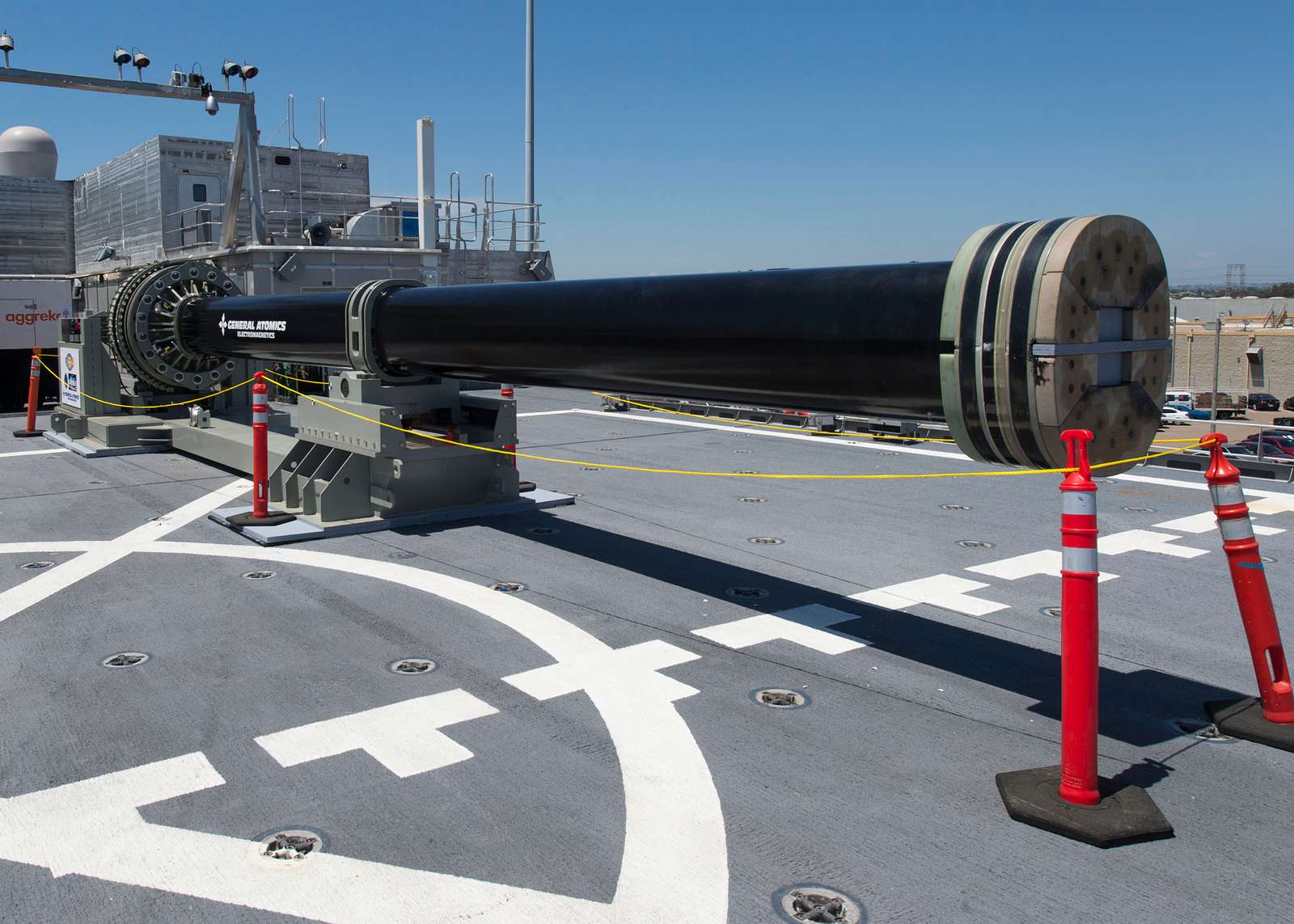The emergence of hypersonic missiles has forced many nations to look for countermeasures. Many countries have been trying to develop “railguns” to counter emerging hypersonic threats and Asia appears to be the hub for the development.
Lockheed’s Hypersonic Ambitions Deferred As US Defense Giant Abandons $4.4B Deal To Acquire Aerojet Rocketdyne
A railgun is an electromagnetic weapon capable of firing projectiles at Mach 7 — seven times the speed of sound — and is said to be capable of destroying ships, missiles, and planes. But on the flip side, the fast-moving projectile and its high-voltage electric current could produce irreversible wear on the rail or inner wall, lowering the gun’s lifespan and accuracy.
Now, China appears to have found answers to some of the issues plaguing railguns. Wang Xiaohe, a researcher at the China Huayin Ordnance Test Centre in the northwestern province of Shaanxi, claims that the country’s researchers have come up with some viable solutions in recent years, reported SCMP.
China’s railgun program has to go through a number of certification processes before it can be used in future battles. Wang and his colleagues emphasized that the volume and intensity of these tests would considerably exceed any previous tests, stating that a significant number of shots would have to be fired “nonstop at top energy levels” to uncover and address issues.
Under Fire From Terrorists, Pakistan Army Plans ‘New Strategy’ To Host ‘Edgy’ Australian Cricket Team After 24 Years?
China’s railgun program is not new. In 2018, some images emerged on social media showing a large, previously unknown weapon placed on the Type 072III-class landing ship, Haiyang Shan.

The possibility of a ship-mounted railgun was mentioned by a verified Weibo account belonging to a retired Chinese navy officer. He said that a project to build a ship-mounted railgun had been authorized years ago, possibly with the help of the Beijing Institute of Technology and a China Aerospace Science and Industry Corporation institute.
Does US Have Railguns?
Last July, the Pentagon declared that it had put a halt to its railgun program in order to free up resources for hypersonic weapon research. Aside from financial limitations, one of the main reasons was the need to replace a gun barrel after 20 shots due to wear and other problems.
The United States has been a pioneer in the development of railguns. It is said an American inventor had suggested the use of rail cannon to shell Havana from the coast of Florida during the Spanish-American War in the late nineteenth century. The Pentagon initiated the modern US railgun program during the Cold War period.
After decades of development and more than 1,000 rounds of tests, US researchers accomplished a variety of technological and engineering advancements that expanded the weapon’s operational range to over 100 nautical miles with bullets soaring at seven times the speed of sound.
Edging Past F-22 Raptor – Here Is The Only ‘Super Fighter’ That Could Have Outgunned The World’s Most Powerful Jet
However, the issue with the weapon is that its range would still expose American warships to enemy fire. This might be fatal in the face of an opponent (China) capable of deploying sophisticated missiles.

Wang claimed that research in the United States and other nations had benefited Chinese researchers a lot. China is using liquid metal in the rail to reduce wear. Chinese scientists also employed some of the models used by American railgun experts to simulate and analyze the occurrence of damage.
However, Chinese railgun had some unique designs that had never been seen before, Wang added. The Chinese design, unlike most railguns, would not have an additional mechanism attached to the muzzle to suppress an electric flash. To attain more consistent performance with minimal damage, it would employ a special coating technology.
In 2018, China undertook the world’s first live open-sea test with a railgun placed on a warship. A 25kg (55lbs) projectile was reportedly propelled to Mach 7.3 and hit a target 250 kilometers away with the prototype weapon. Chinese scientists are also working on hypersonic missiles that could be launched from a railgun and could search for targets, the report said.
Long time no see, the railgun test ship is spotted undergoing sea trials these days. pic.twitter.com/WdxXkyYWrF
— dafeng cao (@dafengcao) December 29, 2018
China claims to have developed heat-seeking hypersonic missiles ahead of the United States, which could be used to attack aircraft carriers and moving vehicles. However, hypersonic weapons are expensive to operate. Railguns, according to the Chinese navy, might help defend the country’s shore due to its unrivaled firing range.
Japan’s Foray Into Railgun Domain
Last Month, it was reported that Japan has decided to develop an electromagnetic weapon system to intercept enemy hypersonic missiles. The decision to develop “railguns” came as Tokyo considers how to deal with the threat posed by hypersonic weapons from its neighbors such as China, North Korea, and Russia.

The plan is to add railgun interceptors to the existing missile defense system. Japan is also considering long-range missiles that would allow it to fire projectiles from afar. The three mechanisms would combine to provide a three-tier deterrent.
A total of 6.5 billion yen ($56 million) has been set out in the fiscal 2022 budget for the development of prototypes of military-use railgun technology. The system ought to be operational in the second part of the 2020s.
Moreover, the Japanese Defense Ministry will begin full-scale research and development of high-power microwave (HPM) weapons in the fiscal year 2022, which begins in April, according to Japan’s Yomiuri Shimbun newspaper. The news comes days after Chinese media reported that the country is working on laser weaponry for the J-20 Mighty Dragon stealth aircraft.
“The ministry plans to work on a prototype over the next five years and has earmarked 7.2 billion yen [US$62.5 million] in next year’s budget plan for that purpose,” officials told Japanese newspaper, Yomiuri Shimbun.
- Contact the author at ashishmichel@gmail.com
- Follow EurAsian Times on Google News
- ARTICLE REPUBLISHED




